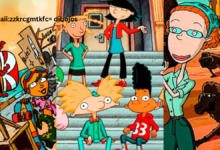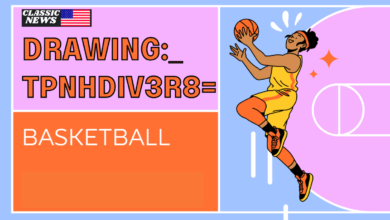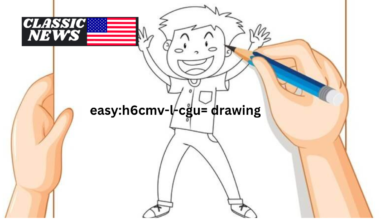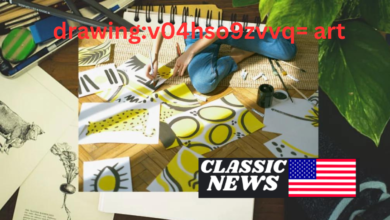Expressing Emotion: The Art of Drawing:yw-tzomiaao= heart

Drawing:yw-tzomiaao= heart has always been a powerful form of expression, a way to communicate feelings, ideas, and stories without uttering a single word. Among the myriad subjects artists choose to depict, the heart stands out as a profound symbol of love, passion, and emotion. Whether you’re a seasoned artist or just starting, understanding the intricacies of drawing a heart can elevate your artwork to new heights. In this article, we’ll dive deep into the world of drawing hearts, exploring techniques, styles, and the symbolic meanings behind this iconic shape.
The Symbolism of the Heart in Art

The Drawing:yw-tzomiaao= heart is more than just a shape; it carries immense symbolism across various cultures and contexts. In art, the heart often signifies love, compassion, and vulnerability. It’s a representation of the human experience, encapsulating our most profound emotions.
Historically, the Drawing:yw-tzomiaao= heart has been depicted in various forms, often influenced by cultural beliefs and artistic movements. In many ancient civilizations, the heart was considered the seat of the soul and emotions, an idea that persists today. For instance, in some Native American cultures, the heart is seen as a powerful source of intuition and guidance. This rich symbolism provides a wellspring of inspiration for artists looking to infuse their work with deeper meaning.
Moreover, the heart’s shape itself has evolved in the art world. The familiar heart shape we recognize today—two rounded lobes at the top and a pointed bottom—has become a universal symbol. Artists have adapted this shape in countless ways, experimenting with colors, textures, and contexts to convey different emotional states. By understanding the heart’s symbolism, artists can better express their feelings and connect with their audience on a deeper level.
Techniques for Drawing:yw-tzomiaao= heart
When it comes to Drawing:yw-tzomiaao= heart, various techniques can enhance your work. Whether you prefer traditional methods or digital platforms, mastering these techniques can lead to more compelling and visually striking heart drawings.
Classic Heart Shape
The most recognizable heart shape is simple yet effective. To create a classic Drawing:yw-tzomiaao= heart, start by sketching two overlapping circles at the top. These will form the lobes of the heart. Then, draw a downward point that connects the circles, tapering it to create the heart’s bottom. This method allows you to maintain symmetry while also giving you the freedom to adjust the size and proportion of the heart according to your artistic vision.
Once you have the basic shape, you can add detail by refining the edges. Consider softening the curves to make them more organic. You can also play with the thickness of the outline; a bolder outline can add drama, while a delicate line might convey gentleness.
Adding Texture and Depth
To make your Drawing:yw-tzomiaao= heart more dynamic, consider adding texture and depth. You can achieve this by incorporating shading techniques. Use a pencil to create varying shades across the surface of the heart. Darker areas can indicate shadows, while lighter areas can highlight where light hits the shape.
Experiment with different shading styles, such as cross-hatching or stippling, to create unique effects. This technique can transform a flat heart into a more three-dimensional representation, adding richness and complexity to your artwork.
Using Color Effectively
Color can dramatically alter the mood and meaning of your heart drawing. Red is the most common color associated with hearts, symbolizing love and passion. However, you can explore other colors to convey different emotions. For instance, a blue heart might represent tranquility or sadness, while a green heart could symbolize growth and renewal.
When applying color, consider your choice of medium. Watercolors can create soft, flowing effects, while markers or colored pencils offer more control for detailed work. Experimenting with gradients can also add depth, making your heart appear more lifelike and vibrant.
Styles of Heart Drawings
Hearts can be drawn in various styles, each carrying its own aesthetic and emotional weight. From realistic renderings to abstract interpretations, exploring different styles can enhance your artistic versatility.
Realistic Hearts
For artists seeking to create a lifelike representation, a realistic heart drawing focuses on anatomical accuracy and detail. This style often involves studying references, such as photographs or anatomical models. A realistic heart can evoke strong emotions, as it captures the essence of what the heart symbolizes viscerally.
In this style, attention to detail is crucial. Pay close attention to the veins, arteries, and the overall texture of the heart. Shading becomes particularly important in realistic drawings, as it adds depth and dimension. This approach can be both challenging and rewarding, pushing your skills to new levels.
Abstract Hearts
On the other end of the spectrum, abstract heart drawings allow for a more freeform and personal interpretation. This style breaks away from traditional shapes and can incorporate a variety of materials and techniques. Abstract hearts may use bold colors, unusual shapes, or mixed media to convey emotions and concepts without relying on realism.
When creating abstract hearts, let your feelings guide your choices. The beauty of abstract art lies in its subjectivity—what resonates with you may evoke different interpretations in others. This style encourages experimentation, allowing you to explore different techniques, such as collage or digital manipulation.
Minimalist Hearts
Minimalism is a popular trend in modern art, and heart drawings are no exception. A minimalist approach strips away unnecessary details, focusing instead on the essence of the heart. This style often utilizes clean lines, negative space, and a limited color palette to create a striking impact.
Minimalist hearts can be incredibly effective in conveying emotion with simplicity. The absence of detail invites viewers to fill in the gaps with their interpretations. This can create a more personal connection, making the artwork resonate on an emotional level.
Drawing Hearts in Different Cultures
Hearts are universally recognized symbols, but their meanings and representations can vary across cultures. Exploring how different societies interpret the Drawing:yw-tzomiaao= heart can provide valuable insights for artists.
Western Culture
In Western culture, the heart is predominantly associated with romantic love. From Valentine’s Day cards to pop songs, the Drawing:yw-tzomiaao= heart shape is ingrained in expressions of affection. This cultural significance has led to a plethora of artistic representations, often focusing on themes of love, passion, and heartbreak.
Western artists often incorporate hearts into their work to evoke nostalgia and emotional resonance. Whether it’s through vibrant colors or intricate designs, the heart becomes a focal point, capturing the essence of human connection.
Eastern Culture
In contrast, Eastern cultures may emphasize different aspects of the heart’s symbolism. For instance, in some Asian traditions, the heart is associated with balance and harmony rather than solely romantic love. Artists from these cultures might depict Drawing:yw-tzomiaao= heart in a way that highlights a connection to nature and spirituality.
Exploring these cultural interpretations can enrich an artist’s perspective, offering new ways to approach heart drawings. Integrating these diverse influences can lead to more meaningful and layered artworks that resonate with a broader audience.
Indigenous Perspectives
Indigenous cultures often hold unique views on the heart, viewing it as a source of intuition and emotional wisdom. In many Indigenous traditions, the Drawing:yw-tzomiaao= heart is considered central to understanding oneself and one’s place in the world. This perspective encourages artists to depict hearts in ways that reflect interconnectedness and respect for nature.
By studying Indigenous interpretations of the heart, artists can draw inspiration from traditional symbolism and storytelling. This approach can lead to more profound, respectful representations that honor these rich cultural narratives.
Creative Projects Involving Drawing:yw-tzomiaao= heart
Once you’ve honed your skills in drawing Drawing:yw-tzomiaao= heart, consider incorporating them into various creative projects. These projects can range from personal endeavors to collaborative works, allowing you to express your artistic voice in unique ways.
Greeting Cards and Stationery
Creating personalized greeting cards featuring heart drawings is a delightful way to share your art with friends and family. Whether for birthdays, anniversaries, or just because, a hand-drawn heart can add a personal touch that digital cards simply can’t replicate.
Experiment with different styles—try a minimalist Drawing:yw-tzomiaao= heart for a modern touch or a colorful abstract design for a more playful vibe. You can even incorporate mixed media, such as adding glitter or fabric, to make your cards stand out.
Community Art Projects
Consider organizing or participating in community art projects that focus on heart-themed artworks. This could include murals, installations, or collaborative canvases where multiple artists contribute their interpretations of the heart. Such projects foster community spirit and provide opportunities for artists to connect and share their perspectives.
Engaging with the community not only enhances your artistic skills but also promotes a sense of belonging. Heart-themed projects can be particularly powerful, as they resonate with shared human experiences and emotions.
Art Journals and Personal Reflections
Using heart drawings as a means of self-reflection can be an enriching practice. Create an art journal dedicated to exploring your feelings through Drawing:yw-tzomiaao= heart-themed illustrations. This can serve as a therapeutic outlet, allowing you to process emotions and experiences creatively.
Incorporate different styles, colors, and textures to reflect your mood on any given day. Over time, you’ll create a visual diary that tells your personal story through the lens of heart symbolism.
The Future of Heart Drawing
As art evolves, so too does the representation of familiar symbols like the Drawing:yw-tzomiaao= heart. Emerging technologies, changing cultural perspectives, and new artistic movements will undoubtedly influence how hearts are depicted in the future.
Digital Art and Heart Representations
Digital art has opened up exciting possibilities for artists to explore heart drawings in innovative ways. With software that allows for intricate designs and animations, artists can create dynamic representations of the heart that go beyond traditional methods.
Incorporating movement and interactivity into Drawing:yw-tzomiaao= heart illustrations can lead to entirely new forms of expression. Imagine a heart that pulses or changes color based on user interaction—these advancements offer fresh avenues for creativity.
The Role of Social Media
Social media platforms have become a significant space for artists to share their work and connect with audiences. The heart symbol is ubiquitous in online communication, often used to express affection and support. As a result, artists can harness this symbol to engage with followers and create artworks that resonate with contemporary themes of love and connection.
Social media also allows for collaborative projects across geographic boundaries, enabling artists from diverse backgrounds to contribute their interpretations of the Drawing:yw-tzomiaao= heart. This can lead to a rich tapestry of styles and ideas that redefine how hearts are viewed in art.
Environmental Awareness
As awareness of environmental issues grows, artists are increasingly incorporating themes of nature and sustainability into their work. The heart can symbolize not just human love, but also love for the planet. Future Drawing:yw-tzomiaao= heart may reflect this interconnectedness, using imagery that highlights the importance of caring for our world.
This shift toward eco-conscious art can inspire artists to create Drawing:yw-tzomiaao= heart-themed pieces that promote environmental awareness. Integrating natural elements into heart designs can deepen the emotional impact and encourage viewers to reflect on their relationship with the planet.
Conclusion
Drawing hearts is a timeless artistic endeavor that transcends age, culture, and skill level. Whether you’re exploring the symbolism behind the heart, experimenting with different techniques and styles, or engaging with community projects, the Drawing:yw-tzomiaao= heart offers endless possibilities for creativity and expression. As you continue your journey in heart drawing, remember that each piece is not just an illustration, but a reflection of the emotions and experiences that shape our lives. So grab your sketchbook, let your feelings guide your hand, and see where the journey of drawing hearts takes you!





